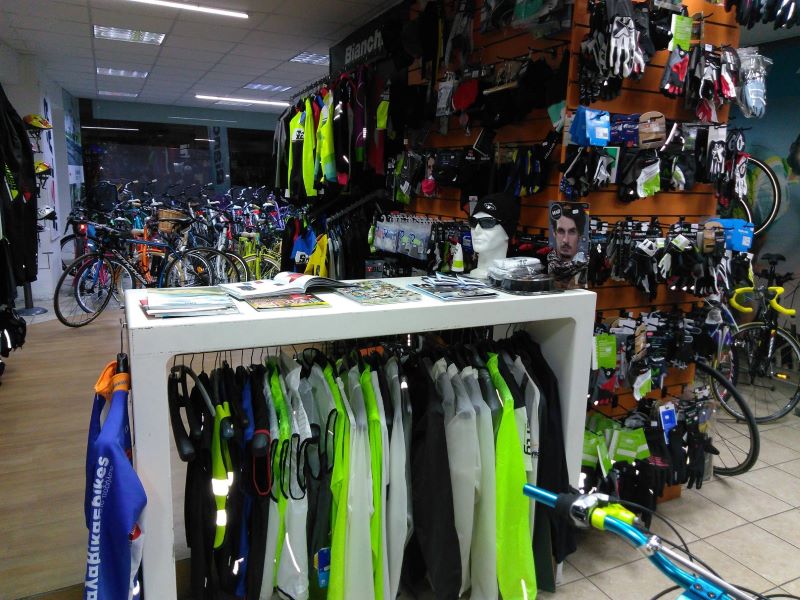
Blog
Winter cycling equipment
There is no such thing as bad weather, there is only bad equipment and the truth is that modern cycling clothing manufacturers have advanced so much in fabric and material technology in clothing or accessories that they will protect you from any weather conditions.
Headgear
The head must always remain warm and this can be done either with the versatile buff caps that can also act as ear covers or as an extra precaution for the neck and all with a simple movement, or with the winter cycling windproof head caps that cover the forehead and ears and their use is recommended on very cold winter days.
Goggles
A pair of goggles are also worn in winter, protecting our eyes from the sun, dust, insects and cold air. Use "detachable lenses", lenses that go in and out of the frame of the glasses and are used depending on the weather conditions in which we are cycling: Black lenses for bright sun, clear for cloudy conditions, yellow/orange for fog and general poor visibility conditions.
Trunk
A route can have so many variations and the weather conditions can also change along the way. Do cotton t-shirts, t-shirts, fleece or jackets protect us on the bike? The answer is clearly no , firstly they make us stiff and secondly they make us sweat so that at the first opportunity the air will blow through our clothes and hug our sweaty body giving us, at least a chill and at most a pneumonia.
The goal to enjoy cycling even on cold winter days is to dress so that your body remains: dry from sweat, dry from rain, warm and comfortable throughout your cycling session.
You will achieve this by wearing clothing that is worn bare-chested and is one of the most important "layers" of your clothing, which will have a tight fit to hug your body and not allow air to get between the clothing and your body. This clothing should not be cotton, because cotton holds all the sweat. An isothermal t-shirt, with short or long sleeves made of polypropylene, polyamide, or wool fibers will keep you warm without collecting sweat.
As a reinforcement, you can wear on very cold winter days, over a T-shirt usually made of synthetic fibres, as these retain their insulating properties even if they get wet. They also wick away sweat more easily and dry more quickly while allowing greater comfort and ease of movement in the body. One such fabric is Thermolite.
Since we ensure the warmth of our body with the base layer and insulate it from the environment, we need the material to protect us from wind or rain so we can stay warm and dry while remaining comfortable without dressing "heavy". Very important is the quality of the material that takes on this role. Because in addition to protection, it must also provide the body with the ability to breathe so that we can expel sweat and not feel uncomfortable or "trapped" in the garment. One of the best materials is Windstopper.
Feet
The long cycling pants (leggings) are reinforced with special pads designed to provide comfort and protection of the sensitive area. It is very important to emphasize that the cyclist does not wear underwear, because it hinders the proper circulation of blood in the points that need freedom of movement of the legs when pedaling, but also because it causes irritation due to friction in this area. A pair of long leggings up to the ankles on the feet with a cushion.
Gloves
Cycling gloves are absolutely essential in winter; good cycling gloves have reinforcements where the hand comes into contact with the handlebars for greater comfort and safety. The windproof protection that good gloves carry offers an extra layer of protection from the wind while keeping their weight and volume low, which helps them fit more easily into the pockets of your shirt or jacket when you don't need them.
Shoe covers
Shoe covers are worn over the cycling shoe like a glove and protect mainly the front part of our lower limbs from cold and water. Covers which are made from materials such as Windstopper, protect the lower limbs in two ways: First, they prevent cold air from getting through and reaching the toes, and second, the internal insulating material helps keep the feet warm. In the event that these covers get wet, due to the fact that their construction material is also breathable, the water will take on body temperature without freezing our feet and will gradually begin to evaporate, ensuring comfort again during a walk or training session.
So this Winter, don't let the bad weather deprive you of the joy of cycling, going out, training or going for a walk.
Happy winter cycling!
Edited by
Dalavikas bikes
